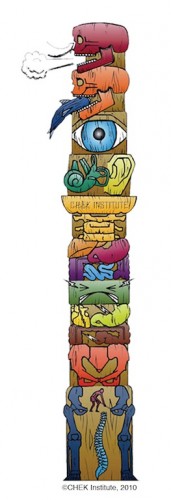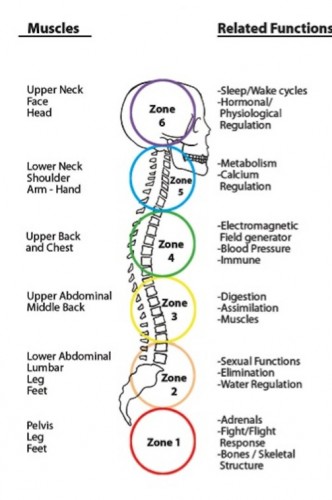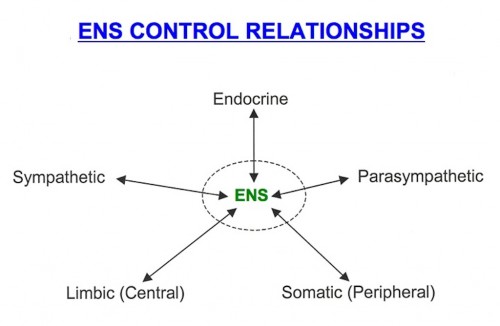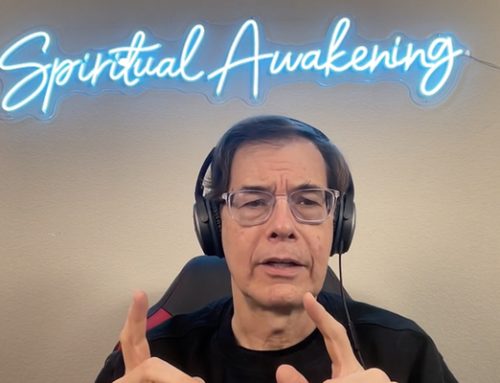Happy Tuesday!
I hope you enjoyed the blogs recently and are ready for our next CTP dialogue.
I had a full day at work yesterday with a lot of filming for www.chekconnect.com
In case you are unaware, you can get a lot of free CHEK information there. I also offer a monthly subscription to Q&A with Paul where you can send in your questions and hear my answers to a wide variety of questions on all aspects of diet, lifestyle, injury, and disease issues.
Many have found this information useful, which is why I keep producing it.
I got into the gym for a fast deadlifting session. My back got some great endurance training over the weekend lifting rocks in my garden. I felt alive and ready for some heavier training today so I warmed up to 365 and did 4 sets of 4 off the step box. I couple that with sets of ten in the single arm high cable row and the reptilian crawl.
It must be working because I’ve gained four or five pounds in the right places since returning home from my recent trip to Europe.
CHEK TOTEM POLE Part 7: ORGANS

We have now covered breathing, mastication and eating, vision, vestibular function and hearing, as well as the upper cervical spine on the CTP.
Lets now look into some of the essentials everyone should know and understand about organs.
Your organs are essential to your health and well-being. Most people have little to no understanding of their organs in general, and because of their ignorance of what is inside them, they make diet and lifestyle choices that create stress on their organs and glands that disrupt almost every aspect of their body and mind.
For hundreds of years, Taoist medical experts (and others from around the world) have informed us that our organs and glands are not just involved in the processing of foodstuffs and managing blood levels of nutrients and the like, but are actually an essential part of our feeling nature.
The ancient physicians and seers commonly attributed specific emotions to specific organs. For example, in Chinese medicine, it is believed that the emotion of anger is held in the liver.
As you can imagine, this type of information is typically seen as nonsense by the traditional medical field, but even their beliefs are now being challenged by (their own!) research.
Since physicians have now conducted many thousands, or even millions of organ transfers successfully, there are enough people running around with other people’s organs in them to provide feedback about their experiences.
Today, you can find complete books written about the experiences people have had when taking in another persons organ(s). The authors and researchers have found ample evidence to suggest that something from the donor does definitely come with their organ, and it’s not just the organ!
For example, I remember reading about a case where a young man of 21 crashed his motorcycle and was killed. As I recall, he was an organ donor and his liver was given to a recipient.
The parents of the recipient were interviewed as was the donor to see if there were any noticeable changes that had occurred since getting the transplant. Aside from feeling better because of the new, functional liver, the recipient stated that before the liver transplant, they had no interest or attraction to McDonalds chicken McNuggets, nor motorcycles.
After the liver transplant, the patient found themselves craving chicken McNuggets and had a burning desire to ride motorcycles.
The researchers then went to interview the family of the liver donor. Low and behold, they found that the young man that provided the liver loved eating chicken McNuggets and was a motorcycle nut.
As I said earlier, there are many books written now documenting a wide variety of such cases. What I’m trying to share that’s relevant here is that your organs are far more complex than just being part of a biochemistry plant that works ceaselessly inside you to keep your body running.
Each organ has specific energetic qualities that create an essential aspect of our sentience and self-perception. This includes our feeling states and our overall emotional sentience, and emotional intelligence.
As a Holistic Health Practitioner, I’ve helped many people restore health to their various organs and glands.
I can assure you, it is very common for people to notice that once their liver, kidneys, adrenal glands, stomach, intestines, or other organs improve in function, their mental-emotional state improves as well.
Having used the Taoist system of organ-emotion correlations for many years, I have first hand knowledge that there is a definite connection between the emotions they attribute to each organ and what I see clinically.
Your Organs Are Essential To Your Survival!
If you look at my totem pole, you will see that almost everything we’ve covered up till now has been a function that in some way comes through the skull (breathing, eating, seeing, listening, vestibular/balance), with the exception of the upper cervical spine.
The brain is the common nucleus for all cells in the body and is the chief regulatory center according to most physiology textbooks.
Once we drop below the brain and upper cervical spine (every nerve in your body passes through your atlas and it can easily affect organ/gland function), we arrive at the organs and glands.
Before we even begin talking about the musculoskeletal system at large, we still have to consider the functions of the limbic/emotional system of our brain, and our sacral system, which also attaches to the spinal cord.
When people live and exercise in such a way that their choices negatively affect the function of glands and organs, they are literally trading mirror muscle for their liver or whatever organ/gland system they are sacrificing.
You can get along pretty well without an arm or a leg, but can you get along without a liver, adrenal glands, a heart, etc?… NO!
That said, the organs and glads are where they are on the CTP because of their absolute importance to both function, and health.
Correlating Muscles, Zones and Functions

Looking at the chart I’ve placed above from my book, How To Eat, Move and Be Healthy!, you can see colored circles represented as zones.
These “zones” correlate directly with “chakras”, or the energy centers/vortexes described by Eastern healers and metaphysicians, and now by western science.
Each zone correlates specifically with a neurovascular plexus (a bundle of nerves, arteries and veins), a specific gland(s), and specific organs.
On the left side of the diagram, I list the muscle regions that will show stress signs if the zone or chakra (and it’s contents) are imbalanced. On the right side of the diagram, I show what related functions are handled by that zone or chakra’s working organs/glands/nerves/arteries and veins.
ORGANS TALK TO AND CONTROL MUSCLES!
In my diagram above (also available in my book titled, How To Eat, Move and Be Healthy!), you can see what sections of the spine share neurological relationships with each organ.
Organs and glands typically have multiple sources of innervation (nerve inputs) to protect them from malfunction should any one segment of the spine be injured.
What is seldom understood, even among some of the most astute physicians of all types is that organs borrow their sensory (pain sensitive) nerves from the musculoskeletal system.
This was probably first thoroughly described by Byron Robinson, MD, who wrote the book titled The Abdominal and Pelvic Brain in 1899 (2nd Ed. 1907).
[amazon-product align=”left”]1236618823[/amazon-product]
The internal sensory system of organs comes from the vegas (10th cranial) nerve. The vegas system does not deal with pain perception in the way the sensory nerves of the spine do.
The vegas system provides information to the brain that deals largely with the biochemical environment within the gland or organ.
When it comes to feeling pain from an organ, the pain has to be sent to the surface of the body, where it can be felt as:
1. Pain
2. Tingling
3. Circulatory changes such as cold and heat, and
4. Numbness.
You are already likely to be familiar with the symptoms of heart trouble. Typically, there is pain in the left chest and arm region coupled with shortness of breath. This is simply because the heart gains its sensory nerves from the same spinal segments as the left chest and arm region.
If you look at the above image, you can see that the colors on the man’s body correlate to which organs will generally send pain to these regions.
Today, there is a MASSIVE amount of money being spent by people with chronic musculoskeletal pain to alleviate their pain, with little or no long-term results!
Why!because many of them are experiencing pain in their backs, arms, shoulders, neck and legs as a symptom of organ or gland stress.
Byron Robinson showed clearly that whenever there is competition between muscles and organs or glands for blood flow (which provides oxygen, nutrition and waster removal), the sympathetic chain ganglia (nerve centers along the front of the spine) will divert blood to the organs and glands first and foremost to keep you alive!
That said, I can’t tell you how many times I’ve seen athletes lifting with poor form because one arm or leg couldn’t keep up with the other; most easily seen during bench pressing and squatting.
I’ve also rehabilitated many athletes that had chronic musculoskeletal pain that wouldn’t go away no matter how much money they spent on doctors and therapists!yet it was completely gone once we restored function to the related glands and organs.
The glands and organs also operate on very tightly regulated energy currents in the body.
If the energy going through an organ (think of caffeine and your adrenals or your heart for instance) is too high for optimal functioning, or, if the organ overheats for any reason, the organ will send the excess energy into the muscles it shares direct neurological relationships with first.
This is because muscle is the most biologically active tissue in the body, and is therefore the best place to dump excess energy, where it is converted into heat.
If this is occurring, the most common response is that there is an increase in background tone of such muscles, as well as being susceptible to cramping and the development of soft tissue pathology, such as trigger point formation.
If a person in such a state continues to push forward with the typical American “no pain – no gain!” attitude, or out of ignorance, the organs will functionally disable the same muscles to limit energy and resource drain so it can effectively heal itself.
When this occurs, I commonly see joint instability problems occurring in the region of the inhibited muscles.
YOUR BRAIN ISN’T AS BIG AS YOU THOUGHT IT WAS!

Diagram Reference: Used by permission from Bill Timmons, Founder, Biohealth Diagnostics (www.biodia.com).
Byron Robinson’s research showed that the solar plexus (sun plexus) has more neurons in it than the entire brain and spinal core combined!
Thus, he termed the solar plexus or enteric (digestive/eliminative) plexus the abdominal brain. Again, his observations are now backed by current scientific investigations.
As you can see in the diagram above, the abdominal brain (Labeled ENS for “enteric nervous system”) exerts regulatory influences over your endocrine (hormonal) system, your autonomic nervous system (sympathetic and parasympathetic), your limbic/emotional centers of your brain, and your somatic (musculoskeletal system and tissues).
In a nutshell, this means that any dietary imbalances, organ or gland pathology, or irritants to any gland or organ can, and do have far reaching effects that are most commonly overlooked by traditional medical physicians.
CONCLUSION
Though most people spend large amounts of money and time to essentially improve the way they look in the mirror, most are spending money on externalized symptoms coming from organ and gland stress within; for example, no amount of skin cream will heal the pimples that result from a dirty intestinal tract!…
Because organs and glands reign higher on the CTP than the rest of the body at large, if you have chronic problems or problems that don’t seem to be responding to conventional methods of treatment, you would be wise to look inward.
In my book How To Eat, Move and Be Healthy!, I provide questionnaires that identify which organ systems of your body may be responsible for your pain and challenges and suggestions as to what you can do about it naturally and easily.
Those wanting specific help to determine how they can get themselves more healthy and vital will be well served to consult a CHEK Holistic Lifestyle Coach (HLC) Practitioner. They can be found at www.chekconnect.com in the locator system.
It should always be remembered that the body will sacrifice blood supply to any part of the musculoskeletal system competing for resources with a stressed gland or organ.
If you are suffering from performance plateaus, or chronic pain and injury states that don’t seem to be clearing up in a reasonable amount of time, then chances are pretty good that you are dealing with the results of an internal gland or organ imbalance.
About 90-95% of the internal health problems I see can be addressed effectively by simple diet and lifestyle modifications.
Simple diet and lifestyle modifications should always be your first method of healing because they are lest invasive.
When people resort to drugs that are often addictive and typically have many dangerous side effects (that are often damaging to glands and organs!), and/or surgery before addressing diet and lifestyle factors first, they often open the door to a lifetime of health challenges.
In the next edition of the CTP series, we will learn about the limbic/emotional system and its amazingly powerful influences over the entire body (and CTP system).
Lastly, I’ll be delivering my webinar The Last Four Doctors this afternoon for the South Pacific Market. Please visit www.placeofchi.com to register.
Love and chi,
Paul Chek





